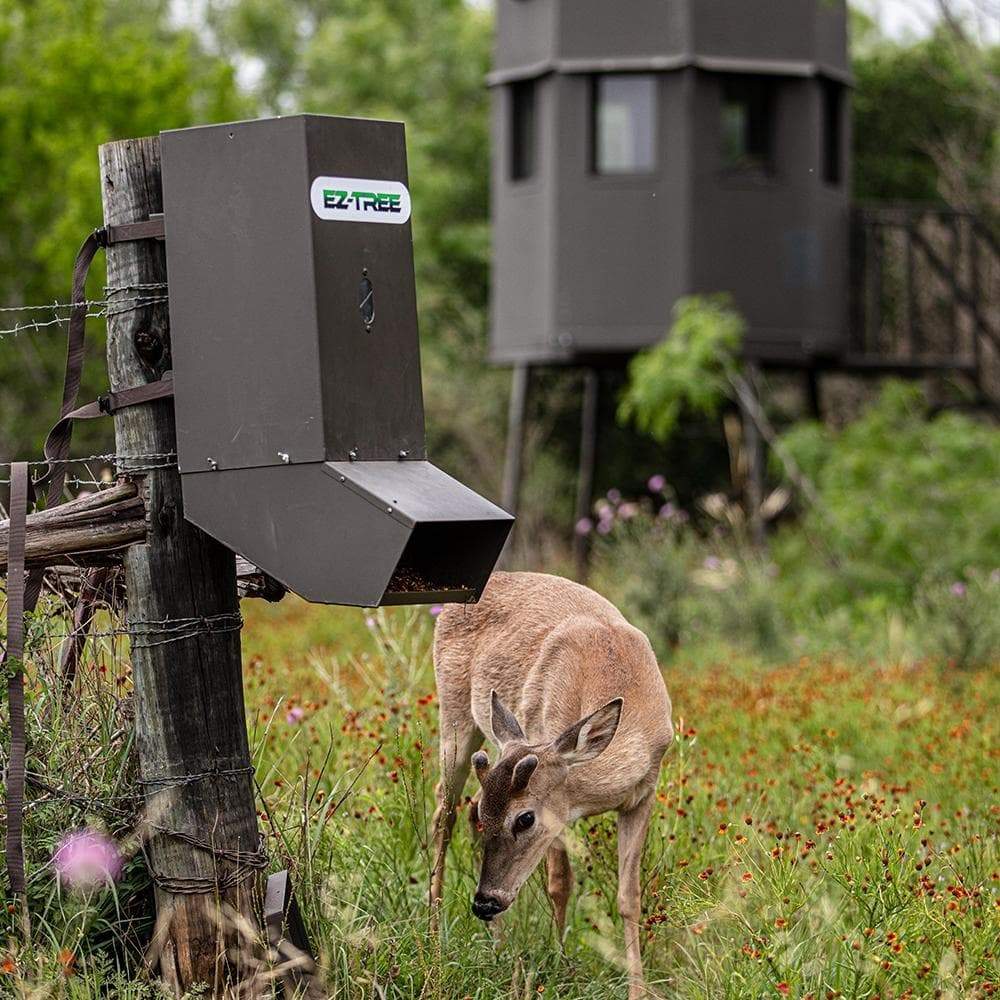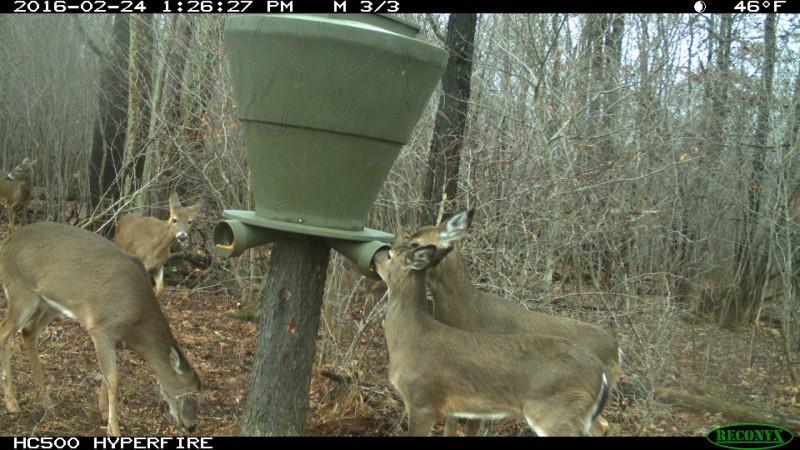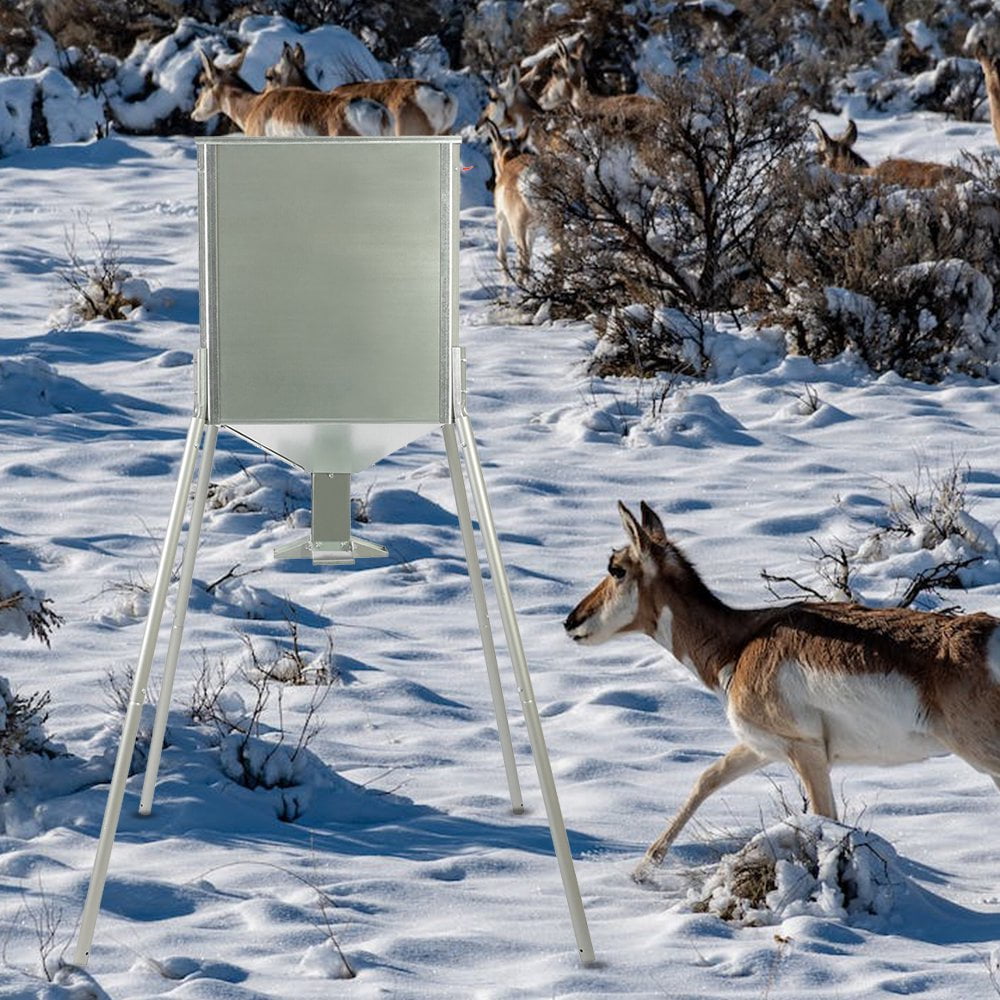The Role of Deer Feeders in Wildlife Monitoring and Environment Conservation
Discover the necessary role of deer feeders in accomplishing these objectives. By enhancing deer nutrition and managing populations, feeders help lessen disputes between deer and humans. In this write-up, we will discover the numerous benefits of deer feeders and their significance in wildlife monitoring and preservation initiatives.
Enhancing Deer Nutrition and Wellness

One of the main advantages of making use of a deer feeder is that it enables you to control the type and high quality of feed that deer take in. By utilizing specially formulated deer feed, you can provide important nutrients that might be doing not have in their natural diet. This is especially essential during times of restricted forage availability, such as the cold weather or during periods of drought.
Furthermore, deer feeders can assist enhance the overall health and wellness of the deer population by minimizing competition for food. When food sources become limited, deer might end up being extra territorial and aggressive, leading to injuries and battles. By providing a constant food resource through a deer feeder, you can assist relieve this competitors and promote a more harmonious feeding setting.
Along with enhancing nourishment, deer feeders can additionally be utilized as an administration device to attract deer to certain areas for observation or hunting purposes. By purposefully positioning feeders in preferred locations, you can produce possibilities for wildlife enthusiasts and hunters to observe and engage with deer in a sustainable and regulated manner.

Taking Care Of Deer Populaces
To efficiently handle deer populaces, it is important to execute techniques that focus on sustainable populace control and environment preservation. By meticulously managing the number of deer gathered each year, wild animals managers can avoid overpopulation and keep the deer population at a sustainable and healthy and balanced degree.
An additional important technique in taking care of deer populaces is the development and upkeep of ideal habitats. Offering diverse and abundant food resources, shelter, and water is crucial for deer populations to thrive - feedthatgame.com. This consists of preserving and recovering all-natural habitats, along with carrying out environment improvement jobs. By enhancing the quality of the habitat, deer populations can much better sustain themselves and avoid becoming reliant on additional feeding.

Minimizing Human-Deer Conflicts
To minimize problems between humans and deer, it is crucial to implement reliable approaches that deal with the elements contributing to these problems (feedthatgame.com). One crucial aspect is habitat devastation, as urbanization and development encroach upon all-natural deer environments. By protecting and producing green areas, such as parks read the article and wild animals corridors, we can offer alternate environments for deer and decrease their interaction with humans
An additional element to consider is the schedule of food resources. Deer are drawn in to houses when they discover easily available food, such as yards and decorative plants. To mitigate this, it is important to inform homeowners regarding deer-resistant landscape design alternatives and to advertise using secure fencing or other deterrents to protect gardens.
Furthermore, managing deer populations via accountable searching practices can assist decrease problems. By carrying out searching seasons and bag limitations, we can preserve a balanced deer populace, which minimizes competitors for resources and reduces the probability of deer encroaching on human territories.
Furthermore, public awareness campaigns can play a significant function in decreasing conflicts. These projects can educate the general public concerning the relevance of keeping a risk-free distance from deer, preventing feeding them, and properly disposing of waste to avoid attracting them. By promoting accountable actions, we can decrease adverse communications in between deer and humans.
Promoting Balanced Ecosystems
Advertise a well balanced ecosystem by encouraging natural lowering and foraging actions reliance on deer feeders. While deer feeders may appear like a practical method to attract and maintain deer populaces, they can disrupt the delicate balance of an ecological community. By relying only on deer feeders, deer might come to be based on the easy food source, causing overpopulation and adverse influence on greenery and various other wildlife.
Urging all-natural foraging habits is vital for maintaining a healthy ecological community. Permitting deer to forage for their food aids them develop crucial skills, such as recognizing and picking healthy plants. It additionally avoids overgrazing in specific areas, making sure an extra even distribution of resources and reducing the risk of habitat destruction.
Decreasing dependence on deer feeders can likewise benefit other wildlife varieties. When deer congregate at feeders, it can develop a fabricated concentration of pets, which may lead to increased competitors for resources and greater transmission rates of illness. By advertising natural foraging, deer will certainly distribute throughout their environment, decreasing the threat of illness transmission and sustaining an extra well balanced and diverse community.
In enhancement to lowering reliance on deer feeders, it is crucial to concentrate on habitat preservation and restoration. By enhancing all-natural habitats, we can give a larger range of food resources for deer and other wildlife. This consists of planting native plants, developing food plots, and preserving natural corridors for activity.
Improving Environment Top Quality and Preservation Efforts
You can substantially improve environment high quality and conservation initiatives by consistently implementing restoration and conservation methods. By recovering and Click Here preserving natural environments, you offer a risk-free and sustainable environment for wild animals to thrive. One way to boost habitat high quality is by growing native vegetation. Indigenous plants give food and shelter for a range of animals, including deer. They additionally help preserve a balanced ecological community by attracting pollinators and supporting the food web. In addition, you can maintain and develop water sources such as ponds or small streams. These water features serve as important drinking and bathing areas for deer and various other wildlife. It is vital to regulate invasive varieties that can hurt the indigenous environment. On a regular basis keeping an eye on and removing intrusive plants can avoid them website here from outcompeting native types and interrupting the ecological community. Lastly, exercising accountable land management methods, such as rotational grazing or regulated burns, can additionally add to environment renovation. These strategies aid maintain healthy and balanced vegetation and stop environment degradation. By implementing these repair and preservation practices, you play a crucial function in boosting habitat quality and preservation initiatives for deer and various other wildlife.
Conclusion
In conclusion, deer feeders play an important role in wild animals management and environment conservation. By offering boosted nourishment and promoting deer wellness, they contribute to the general well-being of the deer population.
By boosting deer nourishment and managing populaces, feeders aid minimize problems between deer and humans.To enhance deer nourishment and health and wellness, you can supplement their natural forage with a deer feeder.In addition, deer feeders can aid boost the general wellness of the deer populace by decreasing competitors for food. While deer feeders might appear like a practical method to draw in and sustain deer populations, they can interfere with the delicate equilibrium of a community. By relying solely on deer feeders, deer may end up being dependent on the easy food resource, leading to overpopulation and negative effects on greenery and various other wild animals.